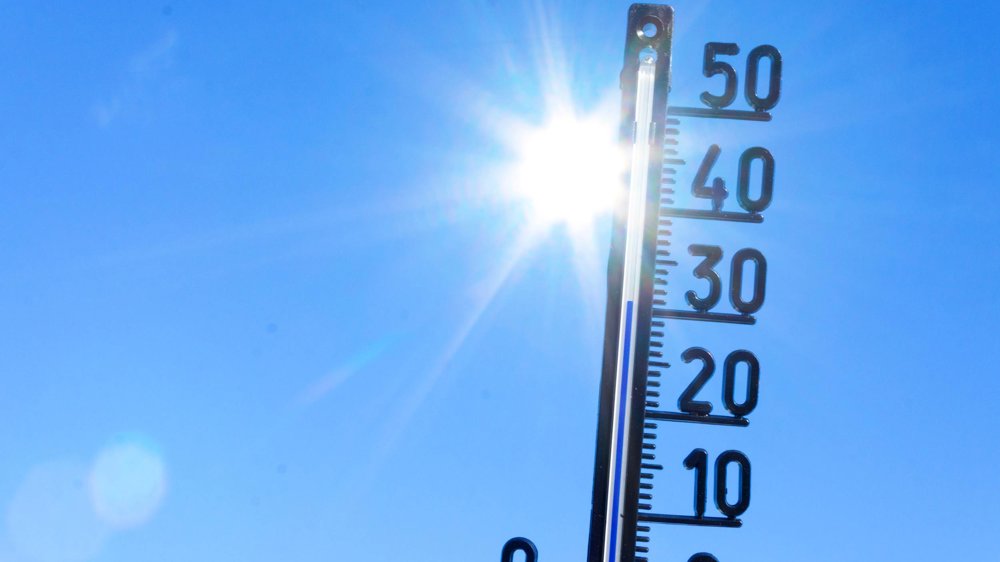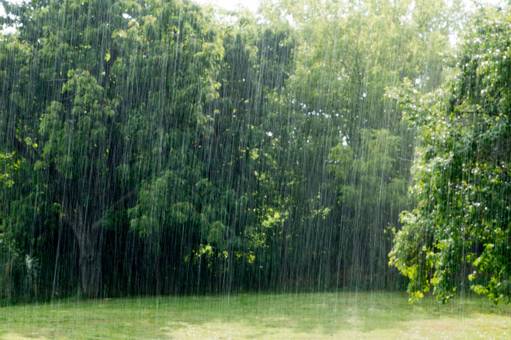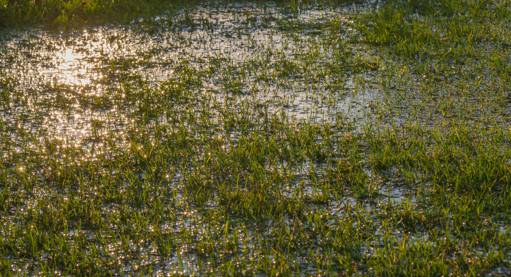The weather forecast for 2023 across Europe – El Niño
28 Jun 2023 Landscaping & Turfcare
El Niño is a term that has been spoken with trepidation over the past year, with some landscaping professionals bracing themselves for the weather event. But precisely what is it and what does it mean for your landscaping services?
An event that will have a global impact, El Niño has the potential to cause unpredictable and challenging weather across the world. At the ground level of running a business, it’s tempting to ignore such phenomena, as there is nothing you can do to change it. However, understanding these larger-scale weather events, and looking at both their causes and effects, can have a real impact on how you carry out your landscaping services.
Most importantly, knowing what’s coming will help you get ahead of the game in planning for how changing weather patterns may affect the day-to-day of landscaping.
What is an El Niño?
The term refers to a global climate phenomenon where temperatures in the Pacific Ocean either rise or fall beyond the norm, which influences weather patterns across the globe; waters and winds in the Pacific oscillate between warming El Niño and cooling La Niña.
We have experienced two consecutive years of the cooling La Niña, but in 2023 and into 2024, weather scientists forecast a much warmer El Niño will impact weather patterns across the globe. Global temperatures are predicted to continue their upward trajectory, passing 1.5°C above pre-industrial levels for the first time this year. Coupling this with a warming El Niño weather pattern, we are likely to see some uncomfortable temperatures and extreme weather this year.
What does El Niño mean for Europe?
An El Niño summer
It comes as no surprise then that Europe can expect a hotter-than-average summer, with this year looking to be the fifth or sixth hottest year on record. El Niño is expected to increase temperatures between May and July of this year, and the heat could exceed the blistering temperatures of 2022, which topped 50 degrees Celsius in parts of Europe and 40 degrees Celsius in the UK.
An El Niño winter
It's not just soaring temperatures that landscapers may have to contend with in Europe. Past El Niño events have seen European winters behave as unpredictably as the summer.
Even between European countries, residents can expect varying weather with northern regions experiencing colder, drier winters while the south contends with much wetter conditions.
Rain in Europe is determined by the balance of high pressures over the Azores and low pressure over Iceland and the direction they're able to push the jet stream. The strong band of eastward wind carries rain across the Atlantic directing it either north or south. El Niño winters often see both sets of pressure lose strength causing the jet stream to drive wetter conditions down to southern Europe.

How will El Niño affect landscaping services?
Trying to map the climate – and plan for how your landscaping may need to adapt accordingly – can feel like trying to assemble a 1000 piece jigsaw. The oceans and atmosphere are in constant conversation and the smallest of changes can have huge impacts on how landscaping professionals may need to respond.
The truth of the matter is that even scientists are unsure of how El Niño will behave in the future across different regions of the world, so with this in mind it’s time to consider what are the most likely extreme weather outcomes and how to prepare for them.
Drought
One of the expected results of El Niño in Europe is summer droughts. It's not just soaring temperatures that cause it, rather drought can develop through both excessively wet or dry weather across the year – and El Niño is bringing both.
Both extremes change the soil environment and can impact soil moisture relations. But by following the below tips you can not only keep on top of landscape maintenance during drought, but use the opportunity to invest in new drought-resistant plants and grass seed.

Combating dry weather
The compaction caused by wet winters combined with heavy foot traffic on grounds can deprive the root zone of the necessary moisture needed for grass and plants to develop properly. Damage during winter may mean roots are unable to hold and retrieve water down the line. A potential disaster in a heat wave.
Getting grounds through a drought is all about preserving moisture, preventing evaporation and causing as little damage to your grass as possible. We explore below the methods landscapers can use to do this.
Mowing
Cutting conditions will need to change during a heat wave to accommodate fragile ground and stop a dream garden from looking barren. Grass is 85 percent water, so for every inch cut, moisture is lost. Following the one-third rule of never removing more than one-third of the grass in any one cut can reduce moisture loss.
Leaving longer amounts of time between cutting cycles and allowing for longer grass will also create a barrier between the soil and the drying effects of the sun and wind. This natural shade will keep the soil beneath cooler, allowing it to hold onto water for longer and prevent evaporation that can exacerbate drought conditions and prevent plant growth.
Aeration
Creating holes in the ground which will allow water and oxygen to filter through all the way down to the roots will help the soil to retain water for longer if a drought does occur.
Aerating in the spring when the ground is not yet hardened by drought but dry enough for the holes to not seal up and grass is in its peak growing period, will give lawns the best chance at surviving a drought.
Drought resistant landscaping
With El Niño causing havoc on weather patterns, as well as adapting existing landscaping practices it could be worth investigating climate-resistant landscaping ideas.
Cultivating soil deeply and digging in large quantities of organic matter will improve soil structure, soil water retention and water availability for plants.
Planting drought-resistant plants such as those with grey-green or silver leaves can spruce up a landscape and are less likely to suffer during a heat wave. The leaves reflect some of the sun's rays, helping them to conserve moisture within the plant tissues.
Water logging
Changes to the gulf stream and increasing temperatures can be a catalyst for waterlogged lawns and grounds during the winter. For every one degree Celsius of temperature rise, air can hold up to seven percent more moisture increasing risk of showers and a very wet winter.
An increase in rain can quickly make a bog out of an otherwise well-cared-for lawn and put a halt to a landscaping project. Not to mention wet soil increases the risk of compaction in areas where traffic might be heavy, damaging the roots beneath – something that can cause dead patches in the short term and exacerbate drought later down the line.

Landscaping a wet lawn
Like with drought, one of the best ways to avoid water logging is through aerating grounds in the winter and spring to prevent compaction.
Using heavy machinery to mow during this climate may also increase the likelihood of compaction. In anticipation of wetter winters that could last well past this year's El Niño, it may be worth investing in a lighter model to mow wet grounds.
Taking care of yourself in extreme conditions
In uncertain and difficult conditions, it’s important that you pay close attention not just to how the landscape is responding to the change in climate, but how you are too. Seasonal changes and extreme temperatures might mean changing the way landscapers go about their work to ensure their own wellbeing.
In excessive heat, this could mean starting the day earlier to take advantage of cooler temperatures and forecasting a slightly longer job length for particularly strenuous work. Your body and your health are essentially your business in this profession, so it’s important to avoid burnout in the summer by stopping yourself from pushing through intense weather conditions.
It’s not just your physical health you need to look out for as we head through the year. With weather patterns looking to be as unpredictable as they are, it wouldn't be unusual for landscapers to be feeling some stress or anxiety. Here are a few things you can do to ensure you’re taking care of your mental health:
- Maintain a good work life balance – getting enough sleep, eating healthily and spending quality time doing something you love outside of work may seem self explanatory, but can often be overlooked.
- Make connections – landscaping can feel like a lonely job, so consider online platforms to find and chat to other landscapers who may be experiencing some of the same stressors. Sharing knowledge, picking up advice or just knowing others are facing similar challenges can be a great help.
- Reach out – if you feel as if your mental health is suffering don’t be afraid to talk. Whether it’s to family, friends or a professional, there are plenty of people who will want to help and share a listening ear.
Kawasaki Engines
You can't always rely on the weather to provide the best conditions for the job. What you can count on is reliable machinery. Powered by Kawasaki machines provide professional landscapers and landscape gardeners with high-quality products that can cope with the demands of the most extreme weather.
Find the right tools for your business, whatever the weather with Kawasaki's trusted partners.
You may be interested in
-
The most iconic green spaces in Europe

-
When should you scarify a lawn and how to revive it afterwards

-
What are the greenest countries in Europe?

-
How to weatherproof a lawn and protect it from flood, frost and drought

-
Landscaping trends for 2024

-
Have you fallen for any of these landscape maintenance myths?







